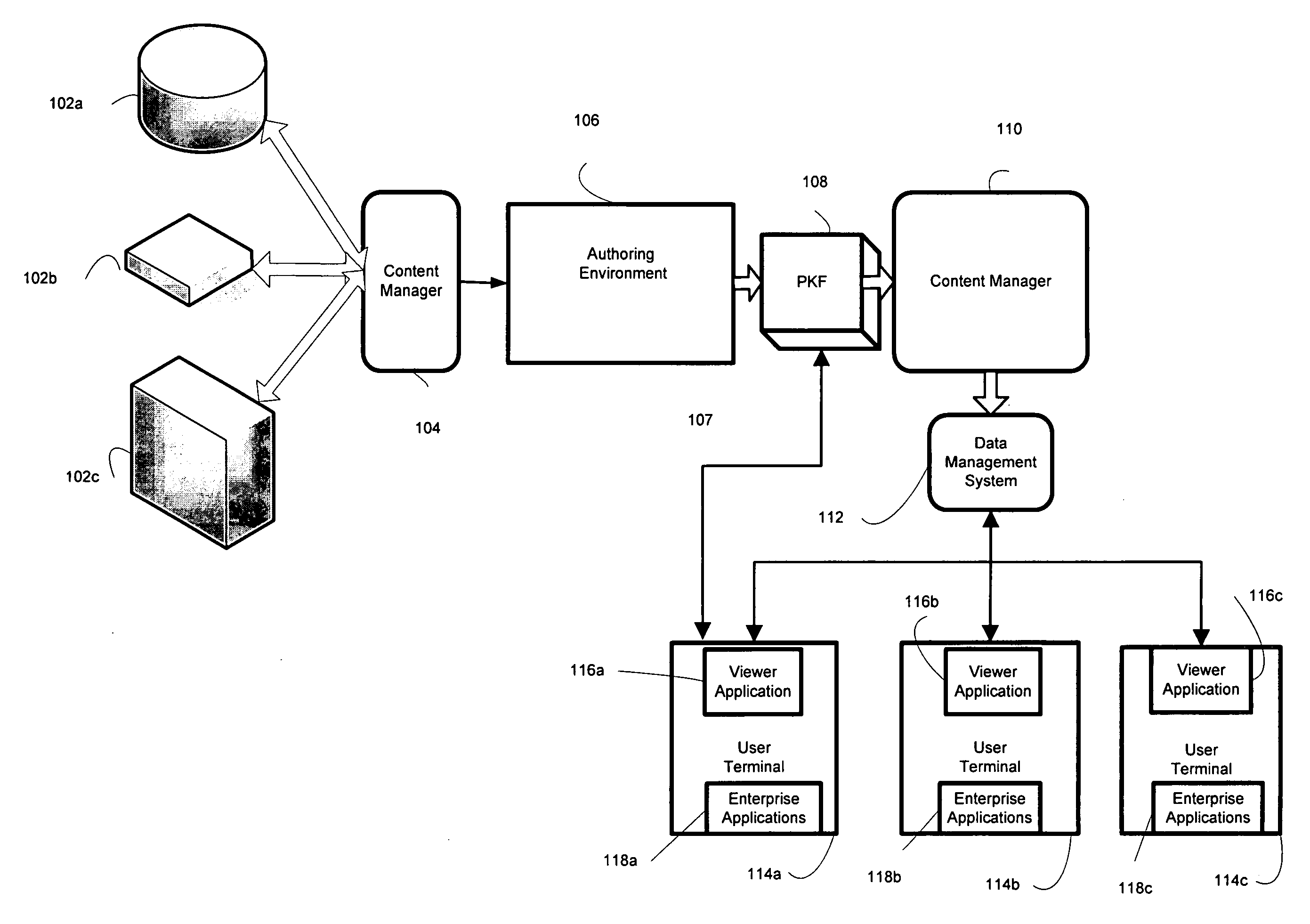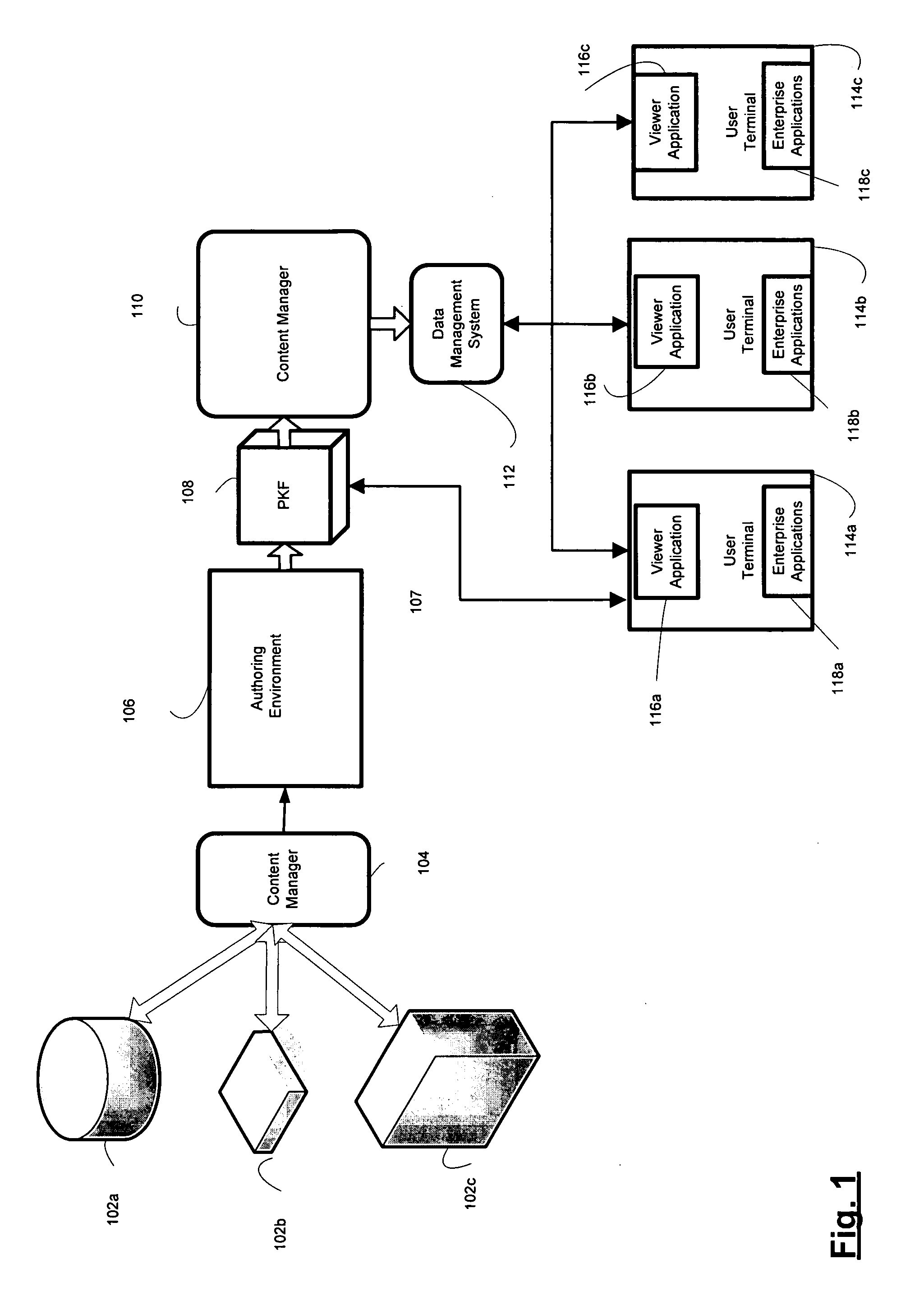Portable knowledge format for the distribution of content
a content and knowledge technology, applied in the field of content knowledge format for content distribution, can solve the problems of time-consuming and costly effort, common content formats that do not support the adequate storage of metadata and metadata structures, and bundling of content in unstructured content formats, so as to facilitate content delivery, efficient retrieval and delivery, and efficient search of content and metadata
- Summary
- Abstract
- Description
- Claims
- Application Information
AI Technical Summary
Benefits of technology
Problems solved by technology
Method used
Image
Examples
Embodiment Construction
[0027] Embodiments of the methods and systems according to the present invention are described through references to FIGS. 1 through FIGS. 11. Turning to FIG. 1, a high-level block diagram depicts one embodiment of a system in accordance with the present invention for generating a Portable Knowledge Format (“PKF”) from a collection of digital data content to be delivered to a user or application.
[0028] A PKF provides for the storage of content comprising various file formats in a structured, hierarchal, and indexed manner. The PKF comprises content, metadata that describes the content and an index that provides for searching the metadata and content. A recipient of a PKF may access the content that a PKF maintains through the use of an index and metadata. Dependencies and associations among content in a PKF are maintained through the use of metadata. Additionally, an index comprised of metadata is maintained to facilitate efficient searching. Recipients of a PKF may search the meta...
PUM
 Login to View More
Login to View More Abstract
Description
Claims
Application Information
 Login to View More
Login to View More - R&D
- Intellectual Property
- Life Sciences
- Materials
- Tech Scout
- Unparalleled Data Quality
- Higher Quality Content
- 60% Fewer Hallucinations
Browse by: Latest US Patents, China's latest patents, Technical Efficacy Thesaurus, Application Domain, Technology Topic, Popular Technical Reports.
© 2025 PatSnap. All rights reserved.Legal|Privacy policy|Modern Slavery Act Transparency Statement|Sitemap|About US| Contact US: help@patsnap.com



